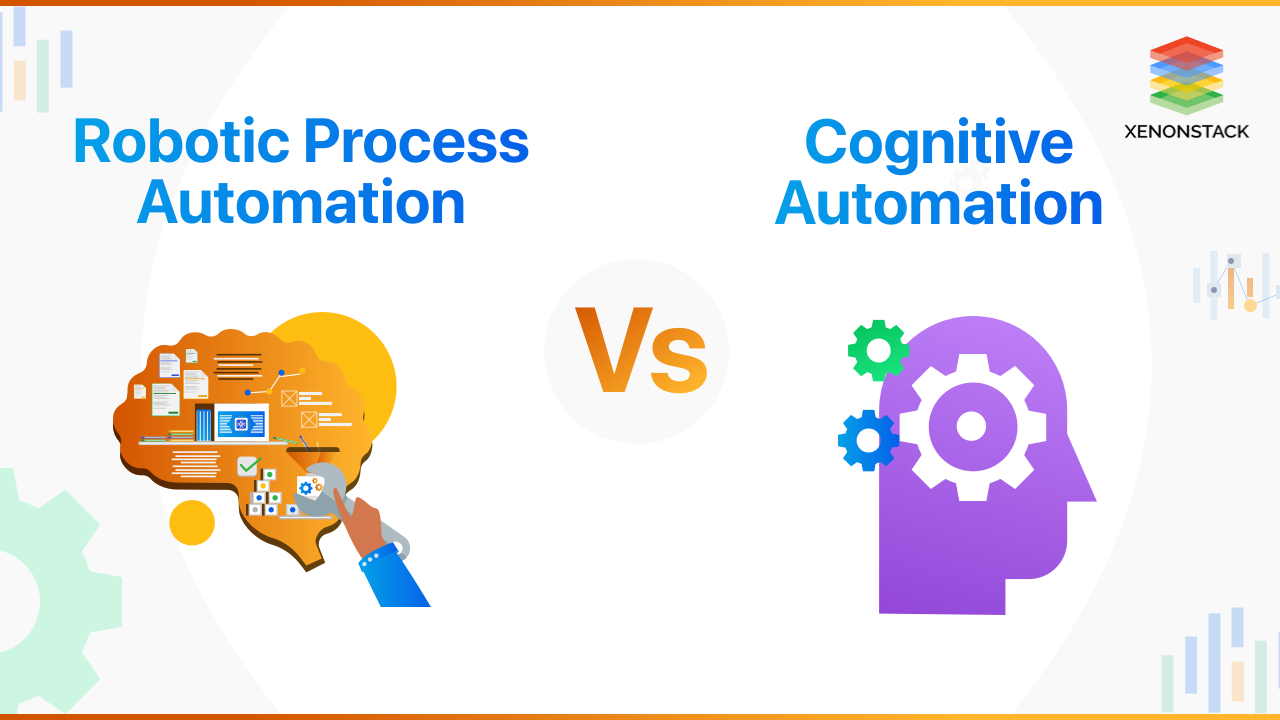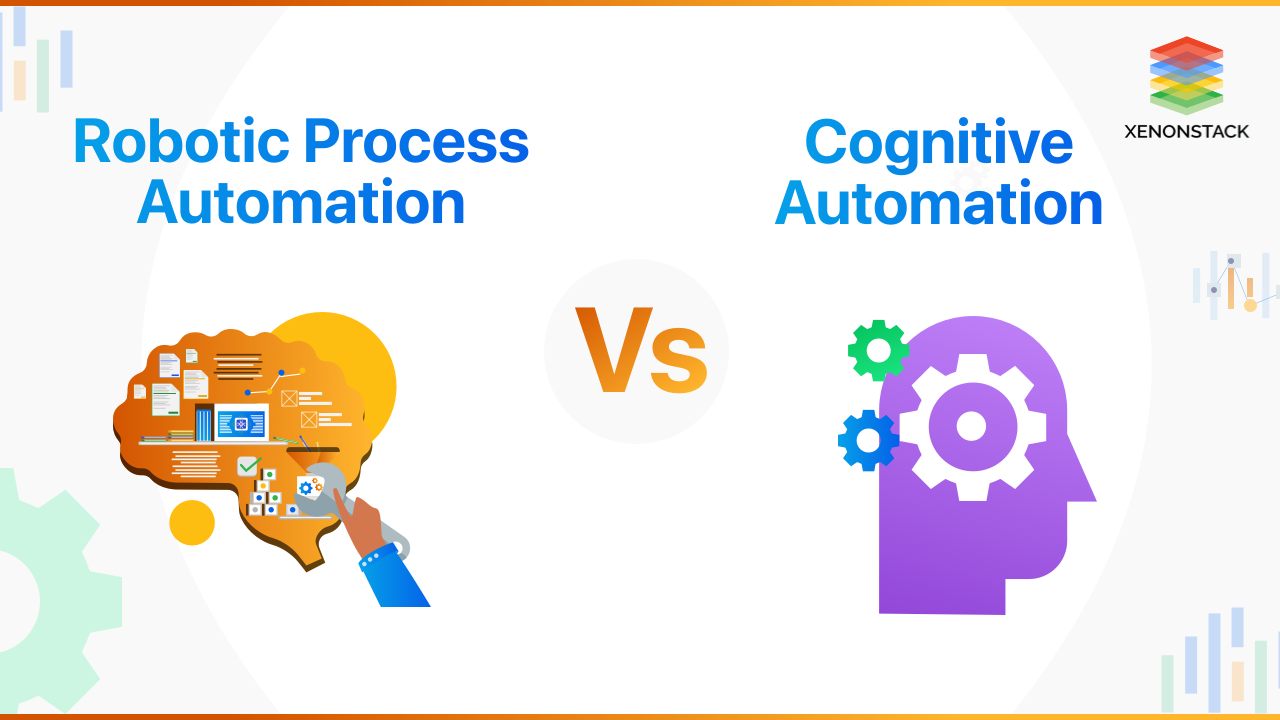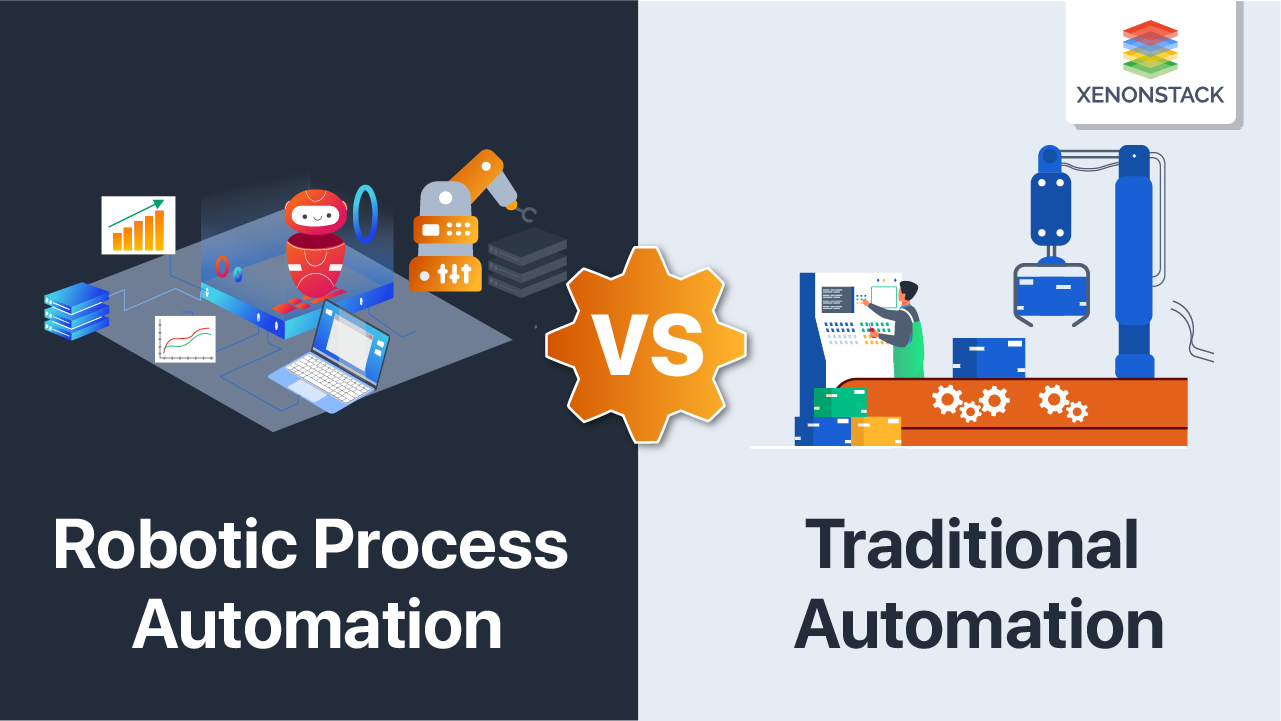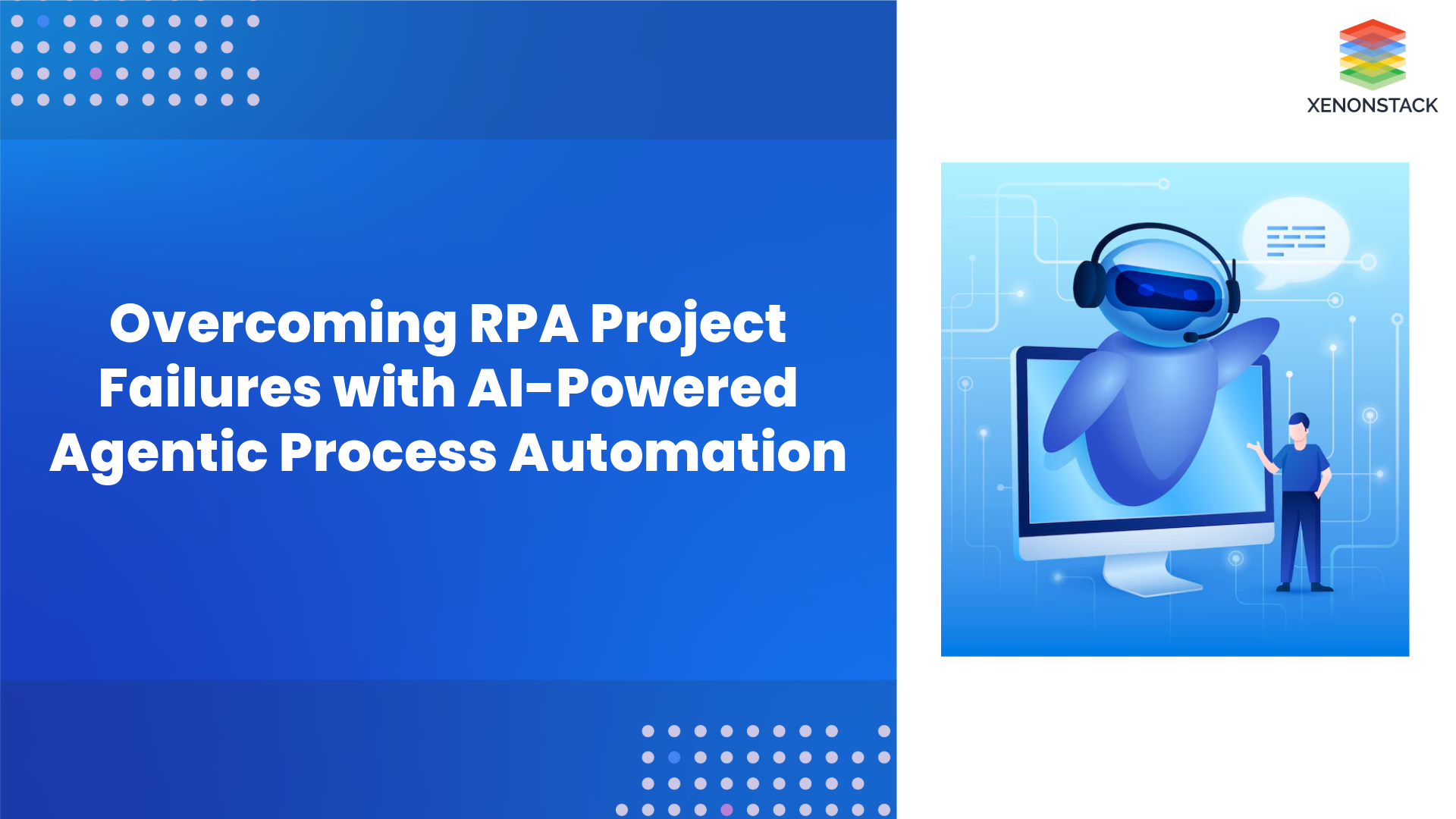
What is meant by Robotic Process Automation?
Robotic Process Automation (RPA) and Cognitive Automation, these two terms are only similar to a word which is “Automation” other of it, they do not have many similarities in it. In the era of technology, these both have their necessity, but these methods cannot be counted on the same page. So let us first understand their actual meaning before diving into their details.
An essential part while automating any business process. The finance and banking sector has the most confidential data. Click to explore about, Cognitive Robotic Process Automation
What is Cognitive Automation?
Cognitive Automation simulates the human learning procedure to grasp knowledge from the dataset and extort the patterns. It can use all the data sources such as images, video, audio and text for decision making and business intelligence, and this quality makes it independent from the nature of the data. On the other hand, RPA can be categorized as a precedent of a predefined software which is based entirely on the rules of the business and pre configured exercise to finish the execution of a combination of processes in an autonomous manner.
These processes can be any tasks, transactions, and activity which in singularity or more unconnected to the system of software to fulfill the delivery of any solution with the requirement of human touch. So it is clear now that there is a difference between these two types of Automation. Let us understand what are significant differences between these two, in the next section.
Differentiating RPA and Cognitive Automation?
The highlighted points are the difference between Robotic Process Automation and Cognitive Automation:
Nature of Application
RPA resembles human tasks which are performed by it in a looping manner with more accuracy and precision. Cognitive Automation resembles human behavior which is complicated in comparison of functions performed by RPA.
Technologies Used
The techniques which are used by RPA are very elemental as compare to the technologies used in Cognitive Automation. Some of the technologies which are used in RPA: workflow automation, screen scraping, and macro scripts and some of the techniques which are used in Cognitive Automation: Machine Learning, Natural Language Processing (NLP), Text Analytics and Data Mining.
The way of Providing Automation
RPA is a process-based approach in nature while cognitive automation is a knowledge-oriented approach in nature which means RPA more often uses ‘if-then’ rule on the other hand cognitive automation have to learn about human behavior through some mediums such as conversations or other data to mimic in a more accurate manner.
Data Processing
In the case of Data Processing the differentiation is simple in between these two techniques. RPA works on semi-structured or structured data, but Cognitive Automation can work with unstructured data. So now it is clear that there are differences between these two techniques. Next section is solely dedicated to their working.
RPA scenario ranges from the simple task of generating an email to automating jobs in ERP system. Click to explore about, Robotic Process Automation in Telecom Industry
How does Robotic Process Automation work?
The RPA can mimic the general tasks performed by the employee, for example, importing the data, opening the files, cut pasting or copy-pasting tasks in an automated way. Nowadays there are two main points which act as the backbone of RPA working -
- The automation unit of the RPA is Bot which should have key features Interfaces which are programmable and should have proper integrations unit.
- Orchestration modules facilitate the management of bots.
How does Cognitive Automation solution help business?
Cognitive Computing is highly dependent upon Deep learning and Machine Learning. Deep learning uses the artificial neural networks; these neural networks can mimic the working of a neuron which is the central processing unit of the Human brain. The Artificial Neural Network is consist of multiple layers of neurons. Learning will take place when the weights are updated between the interconnection of weights. Learning is composed of three phases -
- Using Natural Language Processing for understanding the Human Language and interactions.
- Developing and validating the evidence-dependent hypothesis.
- Conforming and learning from user selections and responses.
A software tool design to execute the Human manual process into automation to work on another complex task. Click to explore about, RPA Governance Model with Best Practices via CoE
Why RPA and Cognitive Automation is important?
Until now the “What” and “How” parts of the RPA and Cognitive Automation are described. Now let's understand the “Why” part of RPA as well as Cognitive Automation. Why RPA is necessary and Why Cognitive Automation is essential. A task should be all about two things “Thinking” and “Doing,” but RPA is all about doing, it lacks the thinking part in itself. At the same time, Cognitive Automation is powered by both thinkings and doing which is processed sequentially, first thinking then doing in a looping manner. RPA rises the bar of the work by removing the manually from work but to some extent and in a looping manner. But as RPA accomplish that without any thought process for example button pushing, Information capture and Data entry.
These tasks can be handled by using simple programming capabilities and do not require any intelligence. To bring intelligence into the game, cognitive automation is needed. Cognitive automation combined with RPA’s qualities imports an extra mile of composure; contextual adaptation. It can accommodate new rules and make the workflow dynamic in nature.
The Significance of these Two Technologies
Technology plays a vital role in the process of increasing the level of society. To handle the challenges of society, the best combination of human and artificial intelligence is required. Therefore, cognitive technology is applied. Cognitive technique and RPA is involved in various domains such as -
- Social Services - With the use of cognitive technology and RPA, insight is extorted from the data. This further helps in developing the personalized technical services plans and get the idea of the vulnerability from a microscopic view. It also results in better provisions for protecting for at risks groups.
- Environment - With the increment in the impact of human on nature there is a need to protect it for upcoming generations. Cognitive Analytics Technologies and RPA also help in dealing with fundamental challenges such as food availability, climate change, problems related to energy and water. With the use of it, the government can become capable of identifying the reasons for pollution effectively. They can also help to identify the problem or challenging areas which can improve in the decrement of the deforestation, track urbanization, better control the ecosystem and mitigate diseases.
- Public Safety - By the help cognitive technology and RPA, better insights are exported to obtain better conditional awareness. So, new capabilities are introduced such as combat epidemics, manage disasters and fighting for the crime.
The financial industry is under great pressure to cut costs. Click to explore about, RPA for Financial Services
What are the benefits of adopting Automation?
These both techniques are not similar, but they have some universal benefits. Some of these are -Engagement of the Customer
- Improving Customer Service
- Personalizing Customer/User Experience
- Increasing Customer engagement
- Enable the flow of faster responses to customer/market needs
Efficiency and Productivity
- Improving productivity and efficiency
- Improving decision making and planning
- Enhancing security and compliance, reduced protection
- Reducing costs
- Enhancing the learning experience
Business Growth
- Expanding ecosystem
- Expanding business into new markets
- Accelerating the rate of innovation of new products/services
Evolving from Robotic Process Automation to Cognitive Automation
Though RPA is considered as a game changer in the modern era industries after the rise of Artificial Intelligence, now it became necessary to change the mode from doing to thinking than doing. It is to evolve the RPA processes into Cognitive Automation. Let’s understand why it is required and how we can do that.Why Automation is becoming necessary?
The integration of robots and cognitive automation technologies will give an edge to the robots to perform in standard scenarios as well as in complex situations in which human intelligence (to make decisions and judgments) is required. Cognitive automation will give power to the robots to export, understand and decipher the knowledge from various resources, to do pattern recognition and on that taking decisions and making predictions. With the involvement of cognitive automation in RPA. Robotic Process Automation can use unstructured data as well as for various processes and tasks.
Adopting Automation in an Enterprise
RPA requires some newly evolved technologies to adopt the automation cognitively. These technologies are -- Predictive Analytics.
- Computer Vision.
- Speech Recognition.
- Recommendations Engines.
- Deep learning.
- Machine learning.
- Natural Language Processing.
- Image analysis.
An Approach to Automation
With the integration of Cognitive Automation with Robotic Process Automation, Enterprises can automate processes that require human judgment and increase their efficiency to incorporate this strategy kindly follow the subsequent steps -- Learn more about Blue Prism Robotic Process Automation Platform
- Explore about RPA Testing - Debugging the Myths and Facts about RPA


